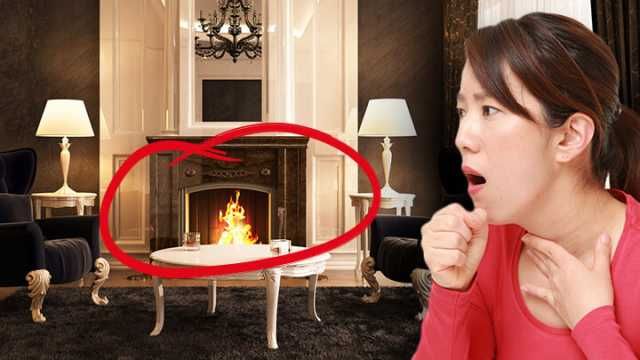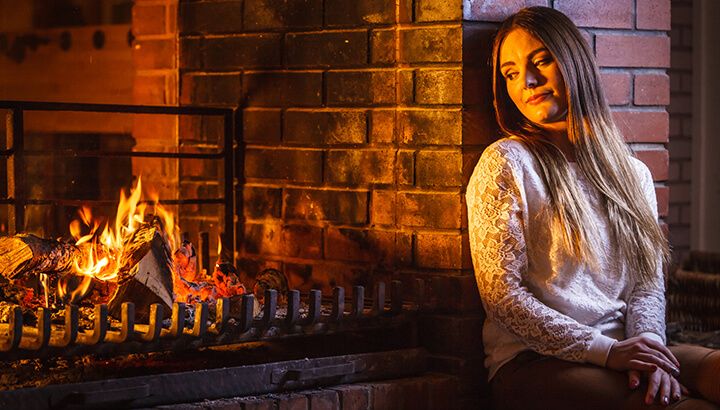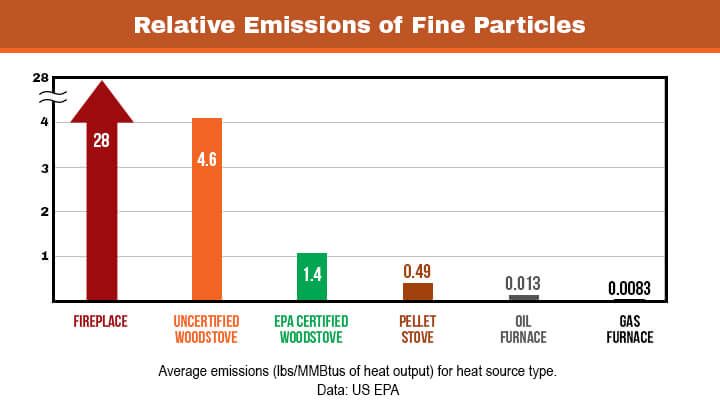
There is nothing more soothing or romantic than the soft glow, rich aroma and pop and crackle of a real wood fire. I have spent many a night curled up in front of a fire with a cup of tea and a good book. There is just something so comfortable about a wood fire, indoors or out. Fires bring people together and promote a sense of relaxation and companionship.
However, the facts are the facts. No matter how cozy a wood burning fire may be, they pose a significant health risk, especially when proper steps are not taken to protect health.
Studies demonstrate that there can be potentially serious side effects when you breathe the smoke from wood fires inside your home. This is because the smoke contains small particles that enter the eyes and respiratory system. This can cause burning eyes, a runny nose, bronchitis and possibly even increase the risk of, or aggravate, lung cancer.
According to immunologist Dr. Sheila Armogida, small particles less than 10 micrometers in diameter are the greatest threat to health. They can lodge deep in the lungs and can even enter the bloodstream. Particles smaller than 2.5 micrometers in diameter are known as “fine particles.” Dr. Armogida says these particles can wreak havoc on your lungs.
How smoke is formed
Smoke is formed when wood or other organic matter is burned. This smoke contains a very complex mixture of gasses and fine particles (particle pollution, particulate matter or PM). In addition, wood smoke also contains a number of very toxic air pollutants such as benzene, methane, formaldehyde and polycyclic aromatic hydrocarbons (PAHs).
Benzene seeps out of paints, furniture wax, glues and detergents, not to mention cigarette smoke and wood smoke. It stops bone marrow from making red blood cells and damages your immune system. Formaldehyde is a highly toxic chemical that is classified as a carcinogen by the International Agency for Research on Cancer.
Wood fires smell good, but not worth the cancer risk
I love the smell of a wood fire, especially on a chilly autumn day. However, once I discovered the negative impact that the smoke may be having on my health and the health of my family members, I quickly did away with our wood burning fireplace.
One of my biggest fears was the cumulative impacts of the smoke. Besides the short-term effects such as headaches, dizziness, lung inflammation and irritation, there are serious implications of long-term exposure. These include chronic lung disease, structural changes to the lungs and even cancer. Some studies even indicate a risk of reproductive problems including low birthweight and increased infant mortality.
Who is most susceptible?
If you are a healthy adult, chances are you will be able to resist the impacts of wood smoke. However, it is possible that you may suffer from shortness of breath, increased phlegm, irritated eyes or allergy-type symptoms when exposed to wood smoke. For those with compromised immune systems, lung conditions, the elderly, infants and young children, the impacts can be far more serious.
Playing it safe

According to the Environmental Protection Agency (EPA), you should never smell smoke in your home when using a wood burning fireplace. If you do wish to use a wood burning fireplace, keep the following tips in mind for better health:
- Burn only wood that has been dried for at least six months.
- Burn only wood that has been split and covered.
- Have your fireplace and chimney inspected and cleaned by a professional yearly.
- Place a tight fitting door around your fireplace.
- Make sure the room where your fireplace is located is well ventilated.
- Start fire with clean paper or kindling.
- Never burn plastic.
- Burn a hot fire.
To minimize wood smoke in your home
You can reduce the health risks of a wood burning fire by switching to a new wood burning insert. Purchase a newer model (after 2000) for best results. These inserts, when properly installed and maintained, can reduce air pollution.
Other options

Here is some information about alternatives to fireplaces:
- Pellet stoves: These are an efficient and healthier option than wood stoves. They have very low particulate emissions compared to open fireplaces and older wood stoves.
- Gas fireplaces: Many people think that switching from wood to gas fireplaces is a healthier option. Unfortunately, gas fireplaces emit nitrogen dioxide which also irritates the respiratory tract.
- Electric fireplace: The best option is to use another heat source (such as forced air) and install an electric fireplace for ambiance. Although you won’t get the full effect of a wood burning fire, you will definitely be doing the right thing to protect your health and the health of those in your home.
- Firepit: If you are really stuck on the nostalgia of a wood fire, install a firepit and enjoy time around the fire with family and friends in the outdoors. Be sure to sit away from smoke and burn well-aged wood.
— Susan Patterson

